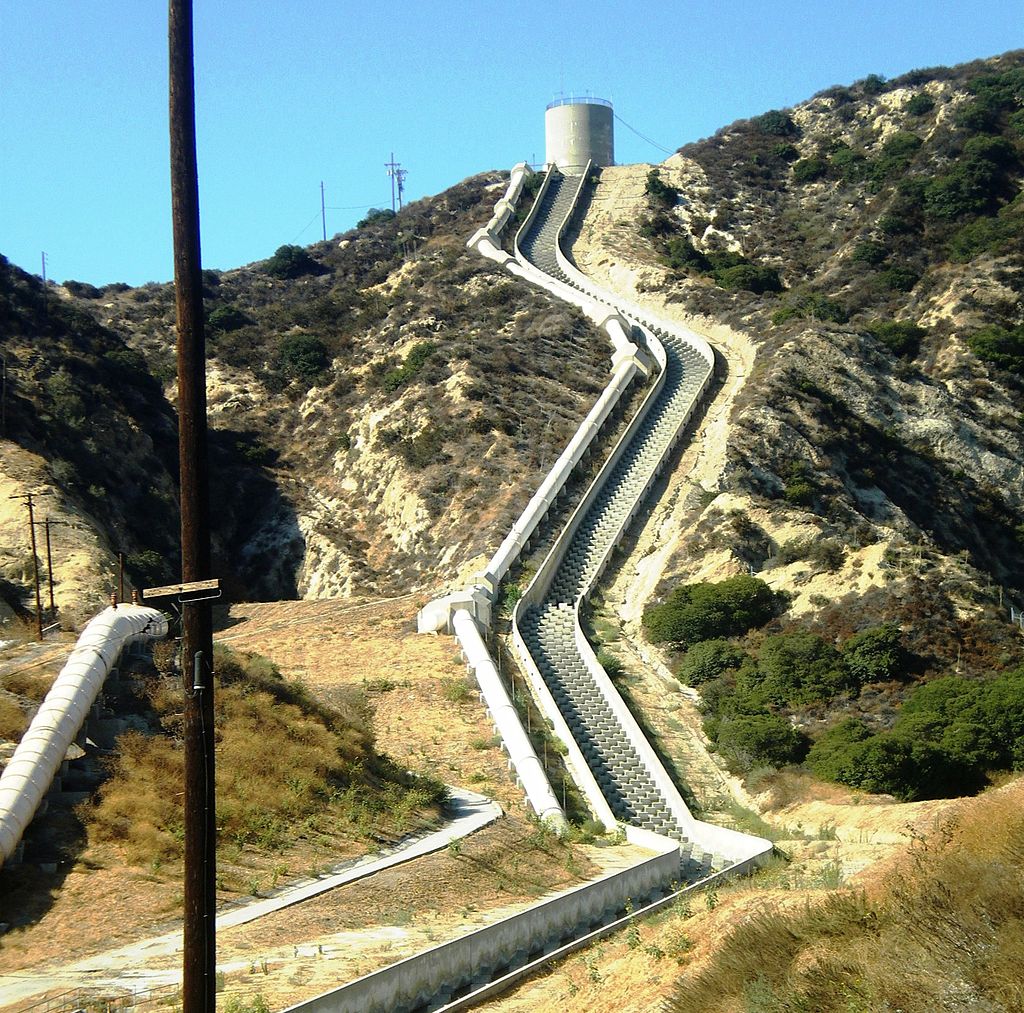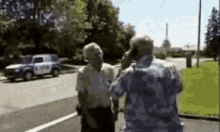Trump is just making noise, and as much as it would be fun to poke fun at candidate Newsom, it isn' on the State either. The problems are local, and well known:
Rick Caruso is appearing on TV all over the place down here discussing mismanagement by the City, and unfortunately, there is something to that, and it doesn;t really have anything to do with lesbians.
(In fact the Fire Chief has been publicly predicting this disaster after the latest round of budget cuts).
Problem 1: A large potion of fire hydrants did not have sufficient water pressure.LADWP's explanation for the shortage comes down to only having three nearby water tanks, each with a storage capacity of about a million gallons, which sounds like a lot, but is minuscule to the demand for a wild fire in the Palisades, which is in foothills primarily. These tanks help maintain enough pressure for water to travel uphill through pipes to homes and fire hydrants but the pressure had decreased due to heavy water use, and officials knew the tanks couldn't keep up. In fact, the system couldn't handle the demand for more that a few hours. The infrastructure had not gown over the years to handle growth in the area. That LA City has chosen to ignore its capital needs in many areas is well known to those of us who represented governmental or private water purveyors and other governmental entities who are in the business of making capital improvements. LA is perceived as a joke truly only focused on short term social spending, made worse by an incredibly awkward governmental structure which leaves the Mayor little power, and was made incredibly worse by Dean Chemerinsky's well intended city charter amendments which focused on empowering local councilmen to move money to pet causes at the expense of needed regional projects, which have all been ignored. And it also means that LA County and other state agencies will not work with LA City (it is a bigger issue than just fire suppression).
Problem 2: a large number of hydrants simple did not work. The news of dry fire hydrants may be a shock to local residents (at least my friends and relatives who lost their homes), but it's a known concern to LA firefighters. As homes burn and water lines begin to leak, overall water pressure drops, meaning that hydrants can run dry before long. In order to have a system that could have handled the demands of continuous firefighting through fire hydrants, experts have said LA would have needed to keep much larger reserves of water physically on hand near the locations of possible wildfires. The problem is LA refused to build a reservoir in the area.
Problem 3: woefully inadequate supply of ground resources. This is purely a manpower budget issue which occurred overtime. No expansion of non-administrative personnel while the City grew. I was literally watching the attempts to save houses on TV while working out. This was spellbinding (a bunch of us were whatching for over 3 hours) and what the cameras showed was a 2 man crew would show-up and try to save a bunch of houses. One guy manning the front of the hose, the other guy moving to the back of the hose to water supplies (treir truck, hydrants, a pool, etc.). Sometimes it worked other time it didn't. My personal contrast was watching the Mandeville fire in 1978 where the was a fireman on the roof of every house in the canyon, armed with hose, as the fire crept down both side of the canyon. They waited until the fire got close enough to the houses, and then blasted the fire until it was defeated and could not advance. No water issues, no manpower issues, etc. But if you read the articles LA fire officials are saying they didn't have "even close" to sufficient ground resources to stop the fire (assuming the had water), despite as fire chief noted she "requested mutual aid from nearby counties, as well as additional crews and trucks from California's Office of Emergency Services and from out of state, all of which have responded and are on the way, but too late."
Problem 4: bad management. The basic plan behind not making the infrastructure improvements and adding staff as the City grew was the mantra that the wildfire instead can be fought from the air. And admittedly, LA City has invested in some air resources (you can debate if that is sufficient, but that debate is irrelevant to what happened to Pacific Palisades). The obvious retort to this mantra is that firestorms occur in windy, smokey conditions where air resources are grounded. That is exactly what happened in the Palisades and as a result, LA City basically stood by while its arguably wealthest enclave burned down. And I don't mean just some houses, but massive areas including shopping districts, schools, houses of worship, etc. no longer exit. Look at the picture in the linked Jon Turteltaub artricle.
https://abcnews.go.com/US/live-updates/la-fires-live-updates-2nd-fire-escalates-quickly?id=117448186&entryId=117518699One other aspect to this is a state issue (though not exactly on Newsom). Many homeowers were not insured or underinsured (Cal Fair Plan without a wrap) due to cancellation or non-renewals of fire insurance and inability to place the new polices as major insurers and reinsurers have left the California market (there is an insurance crises going on, which is another discussion issue). The impacted houses for the most part, are not coming back. Another set of houses which will not be back soon absent legislation exemptions, while be houses that are in the CA Coastal Commission jurisdiction. This area will have some real issues recovering.




